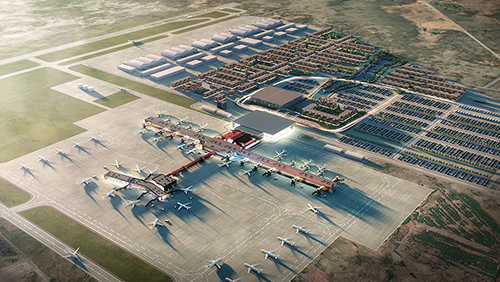
Keflavik Airport could triple its passenger capacity
- Keflavik Airport Master Plan to 2040 was presented earlier this week
- By end of construction, 14 million passengers could transit through the airport based on current distribution, and up to 25 million passengers could transit if distribution was more equal.
- The Master Plan is in line with development plans for the tourism sector.
- Expansion will be conducted in phases planned in accordance with expected passenger increases.
Keflavík International Airport will be able to receive up to 14 million passengers per year once development as outlined in the Master Plan for Keflavík International Airport has been completed, provided the distribution of peak flows is similar to the current distribution. If distribution were more even over each twenty-four-hour period, the airport could receive up to 25 million passengers. According to the Master Plan, the airport could receive 14 million passengers per year by 2040, but should that demand arise sooner, Keflavík International Airport will nevertheless be ready for that amount of passengers.
The Master Plan for Keflavík International Airport was presented at a meeting of stakeholders today. The Master Plan was first presented this past spring, and a comprehensive stakeholder consultation process has since taken place, with the resulting revised Master Plan presented today. Construction will begin at the end of 2016, and the work will be conducted in phases.
The Master Plan is based on development plans for the tourism sector. According to the recently published Tourism Plan, currency income from the sector will increase significantly, from ISK 350 billion in 2015 to more than ISK 620 billion in 2020 and reaching over ISK 1,000 billion by 2030. These amounts are staggering considering the fact that expected foreign currency revenues for the entire economy in 2015 are about ISK 1,140 billion. Tourism’s share of exports grows continuously and was just more than 28% last year, while the share of the historical pillar of Iceland’s economy, the marine sector, was 23%.
“In order for these plans to become realised and for the tourism sector to create such foreign currency revenues, there must be facilities in place to welcome these people,” said Björn Óli Hauksson, the CEO of Isavia. “We cannot have a situation develop where Keflavík International Airport is a bottleneck in this growth area that is set to provide such a high level of income for our economy because it is the entire economy that is assuming the risks, and the expansion of Keflavík International Airport is therefore relevant to all Icelanders, as about 97% of foreign tourists arrive through Keflavík International Airport.”
The expansions will be conducted in several phases, the size of each determined by the magnitude and speed of the increase in tourism. It is clear that the first phase will be significant due to the accrued need for expanded capacity. The State of Iceland, as the owner of Isavia, will not need to contribute capital for the expansion, as Isavia’s financing opportunities are ample and there is potential to involve other parties.
For more information, contact Isavia Spokesman Gudni Sigurdsson, at +354 856 4540.
